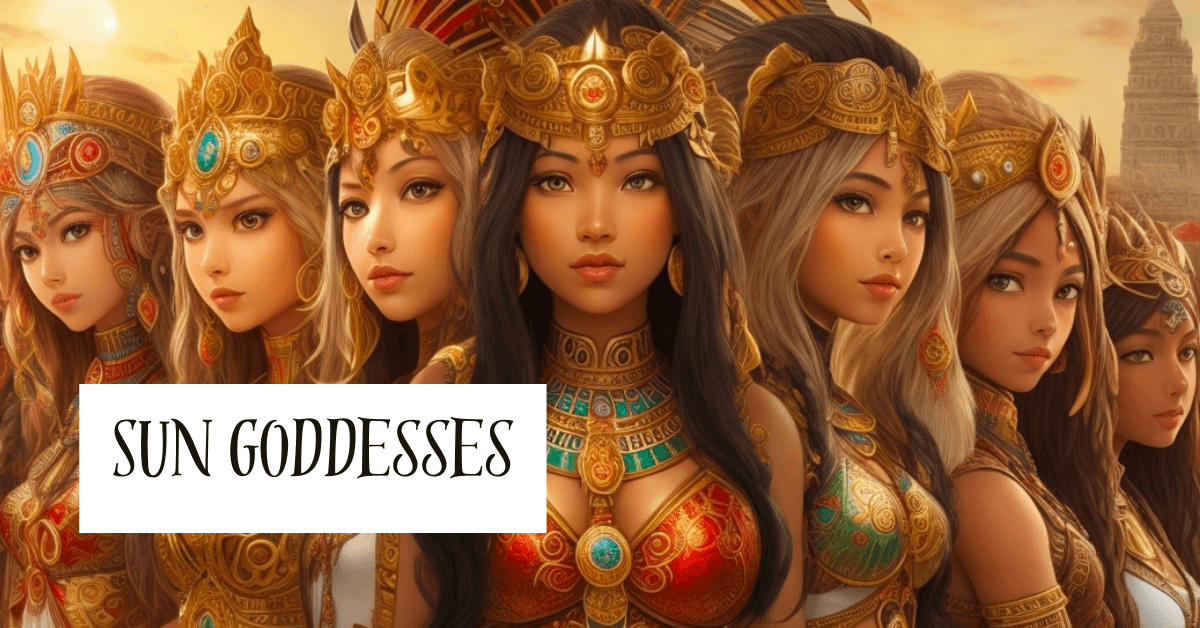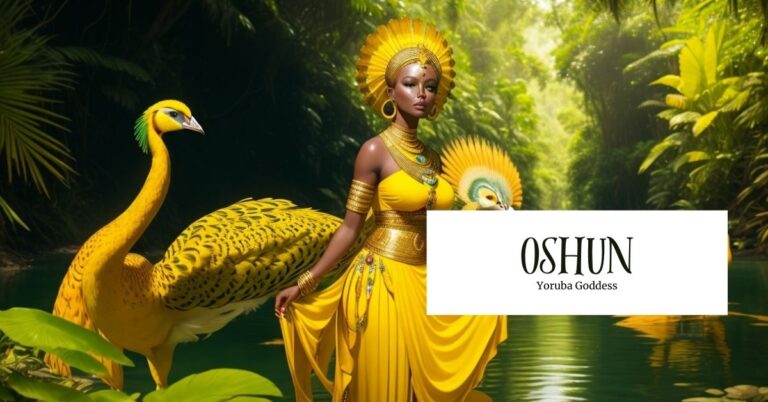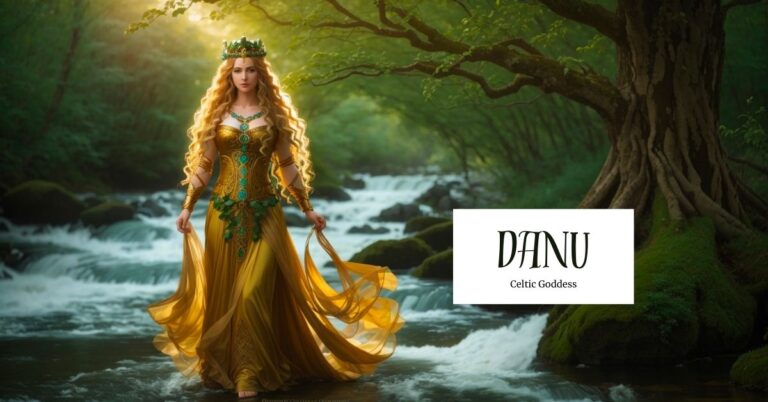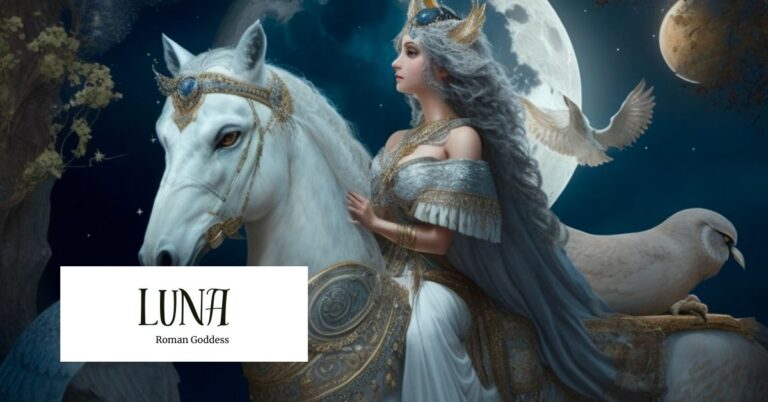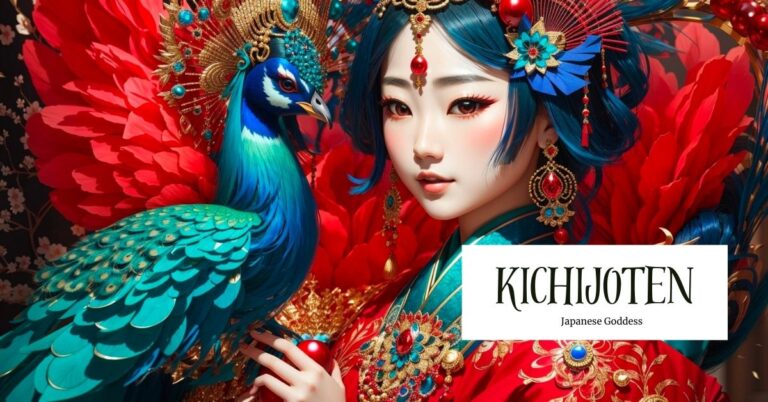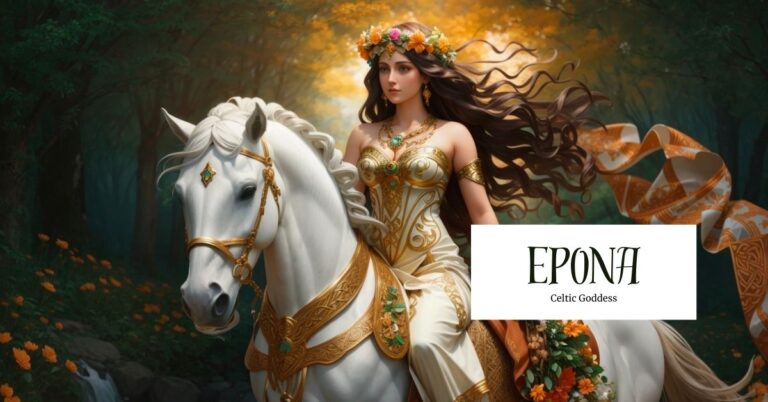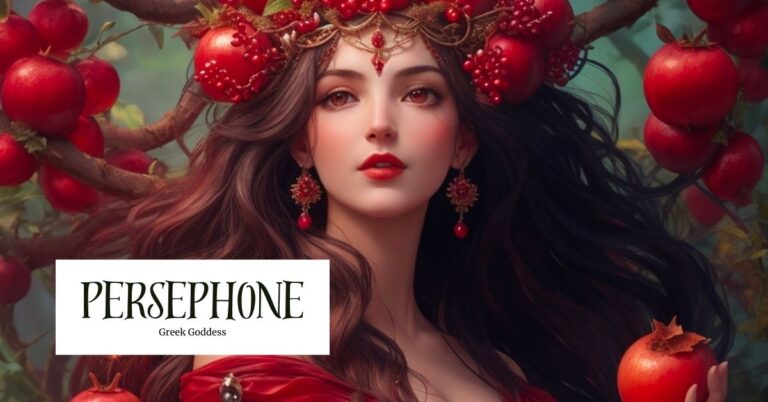10 Sun Goddesses in World Mythology
Sun goddesses are a widespread, skilled, intricate group of deities whose overall presence is required to sustain life on Earth. Though solar deities are typically a boys club, the small number of female figures in the group of solar deities are powerful and majestic, temperamental yet passionate, with full-fledged personalities representing the duality of traits that make up humanity. Without these goddesses, life on Earth would cease to exist– a consequence that is shared in numerous worldly myths.
Who Are the Sun Goddesses?
The sun goddesses are deities in different world religions whose responsibilities are related to managing the sun, which could include bringing upon the dawn and initiating the rising sun or even being a physical representation of the sun itself. Sometimes their realms include control over parts of the earth or even the heavens as the sun is so integral to both locations. While the specific details and traits pertaining to the sun deities can vary among the individuals, sun deities as a whole tend to be powerful and hold an important role in their respective religions. Traits and abilities that are typically embodied by all solar goddesses include healing powers, maternal feelings, control over light and the sun, ties to fertility, and more.
Aditi

Overview
Aditi is a Hindu goddess of motherhood, past/future, fertility, and the sun, although her other roles take precedence over her job as a sun deity. She is the mother of 33 children, many of whom are important gods or goddesses in their own right. Because of her massive family, she is also known as the creator of heavenly bodies. Though being a sun deity is not her primary role, she is believed to be the sky, space, and universe– including the sun– personified. She even imitated the sun with how she rides across the sky on her mount, which is a phoenix. A classic symbol of rebirth, the phoenix is known for bursting into flames and rising from its own ashes.
Characteristics
- She represents freedom, so her appearance can vary and sometimes not take a physical form
- She has been depicted as a cow
- She has also been depicted with many arms
- When in human form, she is shown wearing traditional Indian attire, large jewels and jewelry, gold bangles, and bright colors
Abilities
- Protects others, especially those who pray to her for help and assistance
- Bring wealth and abundance to people
- Can free people from their sins and sicknesses
Symbols
- The sun
- The phoenix, which she rides across the sky
- The rooster, which she rides as well
- Her sword
- A trident called a trishula
- A specific pair of earrings
Traits
- Maternal
- Creative
- Free-spirited
- Mighty
- Rebirth
- Strength
Festivals/Rituals
- There are shrines and temples in the sun goddess’s honor, including one in a cave in Vizhinjam, Kerala
Amaterasu
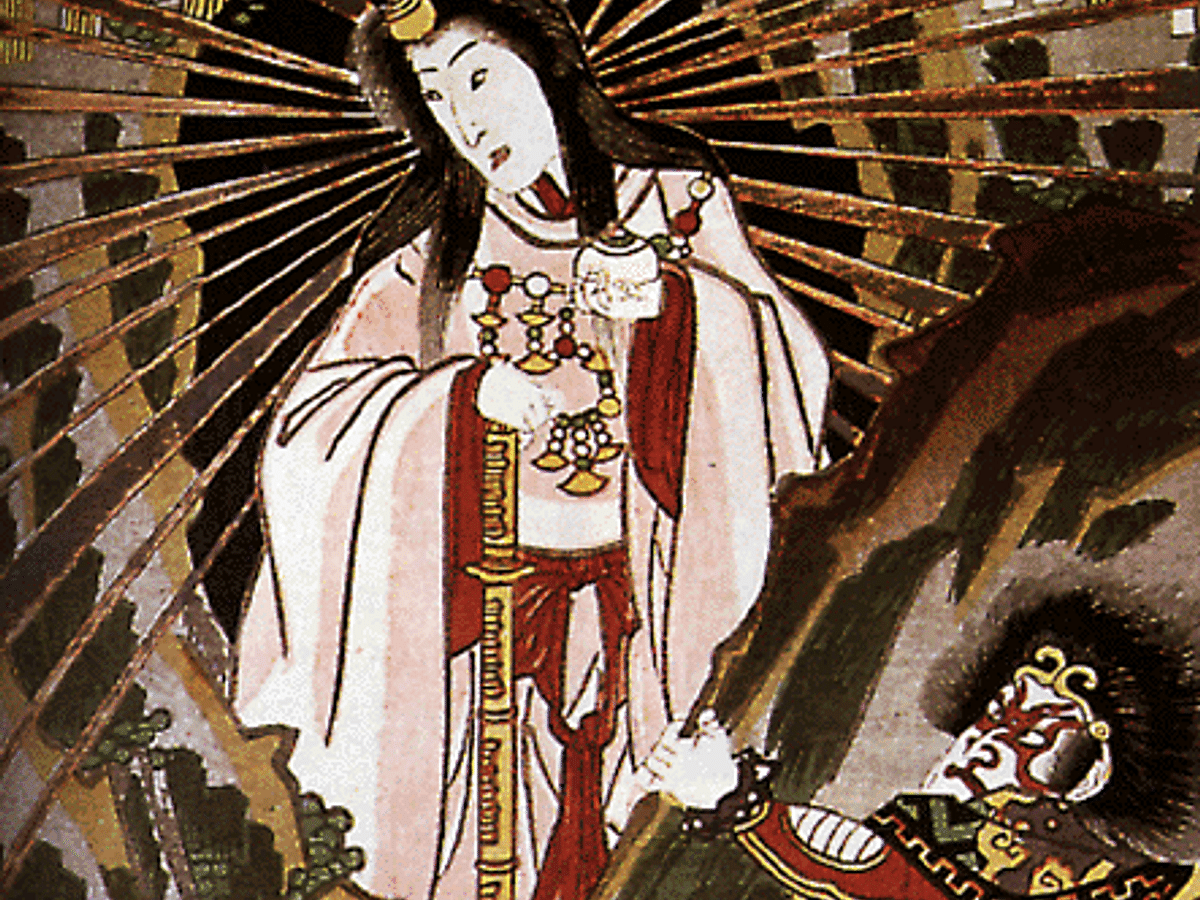
Overview
Amaterasu ōmikami, known more commonly as Amaterasu, is the sun goddess of the Shinto religion, a religion that originates in Japan. She is one of the most important deities in the Shinto faith not only for her responsibilities in the changing of time from night to day, but also for her control over Takama no Hara, which means the High Celestial Plain and is the Shinto religion’s idea of heaven. Because Amaterasu is so important, she also has the responsibility of electing humans to hold political power, an idea that is sometimes called the divine right of kings. One of the most well-known legends about Amaterasu is when she stubbornly remained inside a cave, punishing the world and other deities with incessant darkness; she was finally drawn out of solitude when the other gods and goddesses played loud music and poured rivers of wine, and the promise of a good party was enough to bring Amaterasu back.
Characteristics
- The sun goddess is depicted as coming from Japanese descent
- She has long, flowing black hair
- She is also depicted with smooth porcelain skin and painted red lips
- Amaterasu is usually wearing traditional Japanese clothing and jewelry
- Sunbeams burst from behind her head like a halo or crown
Abilities
- Has influence over the rising and setting sun
- Created goddesses with special items
- Responsible for empowering the Japanese imperial family
- Brings light and energy to humanity and the earth
Symbols
- The sun
- Rooster, whose crowing is associated with dawn and the start of a new day
- Octagonal mirror
- Raven, which is Amaterasu‘s messenger
- Snake
- Dragon
- Mirror, necklace, and sword from the legends
- A cave
Traits
- Nurturing
- Maternal
- Stubborn
- Purity
- Order
- Strong
- Embodiment of light and energy
Festivals/Rituals
- Grand Shrine of Ise is one of the most important religious locations for the Shinto religion, including Amaterasu. Worshippers complete pilgrimages to the Grand Shrine of Ise to celebrate the gods and goddesses. Naiku is the name of Amaterasu’s personal shrine.
- Jingū Shikinen Sengū is a ceremony held every two decades to honor all of the Shinto deities at the Grand Shrine of Ise. Clothes, food, and various supplies are given as an offering to the Shinto gods and goddesses.
- Other Shinto shrines, found throughout Japan, are also important places to worship the sun goddess.
Brighid

Overview
Brighid, or Brigid, is a vitally important goddess in the Celtic religion, and she juggles many different roles as a deity. In fact, she is what is called a triple aspect deity. Beyond being a sun goddess, she is also the patron saint of fertility, healing, artisans and creativity, children, and more. She is protective over her people and does not shy away from battle if needed to protect others. One of her main roles as a deity gifting ruling humans the divine right of kings. She is unique among solar deities as she is in control note only of fire (which is typical among sun gods and goddesses) but also of water.
Characteristics
- Brighid is often depicted wearing a cloak with different feathers
- She is also shown wearing a headdress that displays a flame on the forehead
- Some depictions show the goddess with sun beams branching out from her head, almost as if in a headdress
- The sun deity typically has red hair
Abilities
- Helps give power and sovereignty to human rulers
- Have the ability to heal and give life
- Is an artist of many forms and mediums, including weaving, carving, and metal working
- Can heal others
- Has control over both fire and water
Symbols
- Sacred flames and fire
- The snake, which is a symbol for healing in many cultures
- The cow, which is a symbol for fertility in the Celtic culture
- Many different birds are symbols for Brighid
- The swan, which is another symbol for healing
- The rooster, which is a symbol for dawn
- The goose, which is sacred in Celtic culture
- The hammer and anvil
- The harp
- White, red, and green, which represent healing, fire, and fertility respectively
Traits
- Protective over the earth and its people
- Strong warrior
- Creative
- Wise
- Compassionate
Festivals/Rituals
- Imbolc is a annual festival that begins on Feburary 1st and honors the sun deity
- Cloth is hung from the branches of a tree as a way to see guidance and protection from Brighid
- Fires and candles are lit to represent the changing of the seasons as days grow longer and the sun becomes more prominent
- Dolls and crosses made of corn are made for Brighid. The dolls, known as brideog, are made in the likeness of the deity
- Followers will also light large bonfires in her honor
Beiwe

Overview
Beiwe, also known as Beaivi, is the sun goddess of the Sámi religion, which originates in modern day Norway, Sweden, Finland, and parts of Russia. The solar deity is also the goddess of spring and fertility, and she is extremely important to the Sámi religion. As with most female sun deities, Beiwe is seen as the mother of all and important to creation and life. Legends say that Beiwe would ride across the sky in a carriage built from reindeer bones and antlers as she brought about the change of seasons. Unlike many of the solar deities, who often have tempers and are associated with battles and fighting, Beiwe is a fairly gentle, peaceful goddess. Even today, she is viewed as a patron saint of mental health, and she is the mascot of a few modern mental health organizations and groups.
Characteristics
- The goddess is a beautiful woman
- Depicted with reindeer antlers
- She often wears warm cloaks or furs
- Flowers and plants would grow along the path as she walks
- Many depictions show white animals, such as reindeer, standing beside her
Abilities
- Bring light and warmth
- Drives away the winter season
- Increase the fertility and growth of plants
- Increase the fertility and prosperity of animals
- Could help people fight off depression and “insanity” (the Sámi idea of mental illness)
Symbols
- Reindeer (particularly white ones)
- White ribbons
- Butter
- Rings/circles, which help represent the sun
- The sun
- Drums, often decorated with an image of the sun
Traits
- Maternal
- Kind
- Generous
- Innocent and pure
- Calm
Festivals/Rituals
- Festival of Beaivi
- Held on the winter solstice, this celebration is held in honor of Beiwe
- White female animals, such as white reindeer, are sacrificed in the sun goddess’s honor to call her and the sun back and bring about spring
- The scarified animals would be broken down, and their flesh would be put onto sticks that are folded into circles and decorated with ribbon
- Spring celebrations
- As the seasons changed and the sun “returned,” people would spread utter on their houses as a sacrifice for the sun goddess
- The intention was to give Beiwe strength as she continued to bring sunlight and warmth to the earth
- On the summer solstice, people made circles out of leaves for her and ate butter
- Prayers for mental health
- The Sámi people prayed to Beiwe to bring peace and sanity to individuals
Olwen
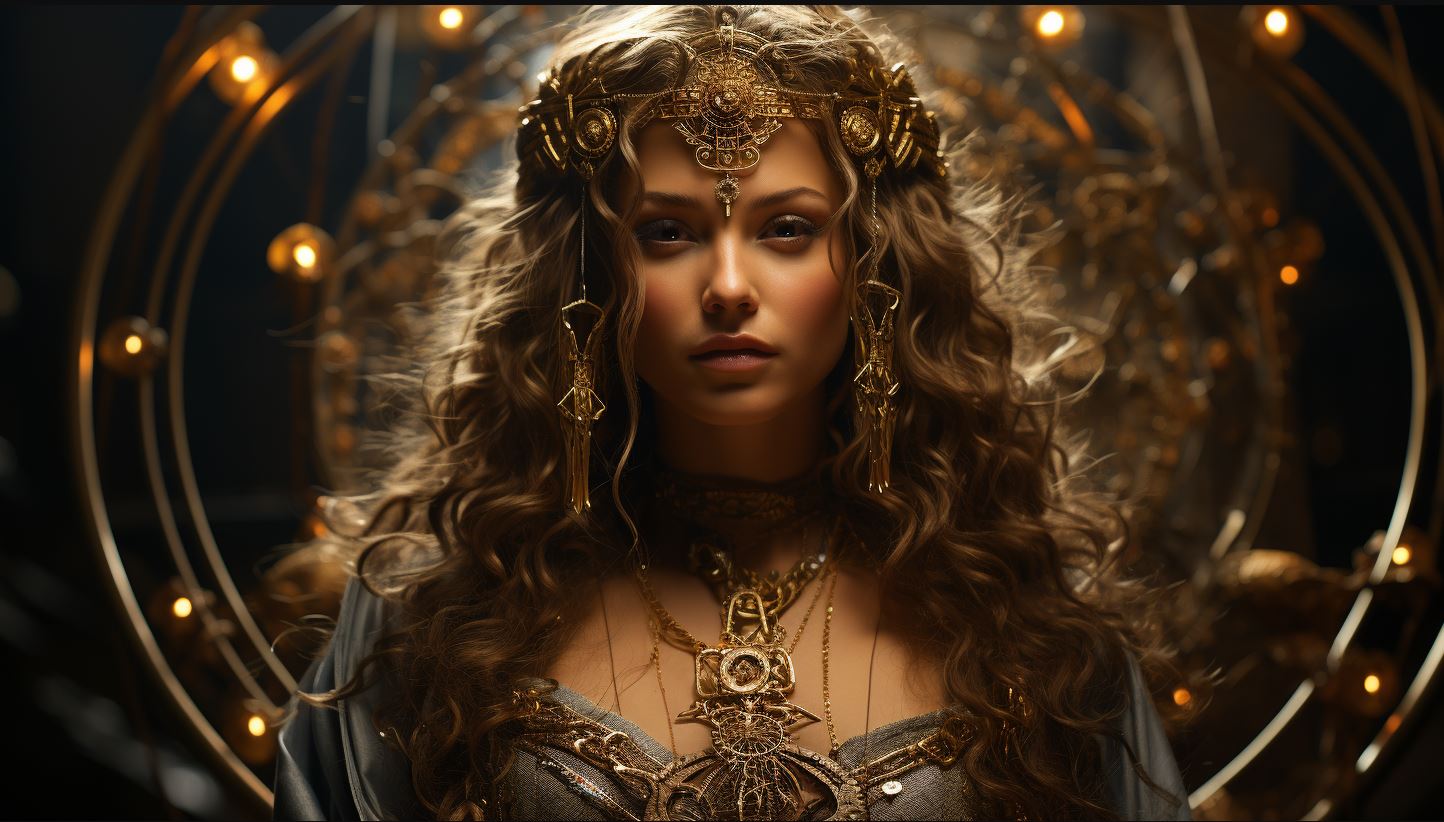
Overview
Olwen is more than just a sun goddess; she is responsible for three realms: the Earth, the Heavens, and the Underworld. However, despite her widespread influence over the universe, she is mentioned very little in myths and legends. Olwen is a Welsh goddess who is most known for the story in which her soon-to-be husband completes many varied and difficult tasks to win her hand in marriage. She is associated with the cycle of death and rebirth; the idea of new life after winter or out of the underworld brings hope to an otherwise sobering subject. However, she is believed to have started as a solar deity because of her strong association with light.
Characteristics
- Olwen has hair so blonde it is nearly gold
- She is described as having pale skin and fair hands and rosy red cheeks
- The sun goddess is often depicted wearing a red and orange robe that resembles flames
- She is also wearing a gold necklace with many bright colored gems displayed
Abilities
- To bring light and warmth from the sun
- Healing
- Can travel from the Earth to the Underworld and back again
- Can influence nature and the growth of living things, particularly plants
Symbols
- The sun
- White shamrocks and their flowers
- Gold wheel
- Late-blooming flowers
- Rings
- The number thirteen
Traits
- Loving
- Gentle
- Positive influence
- Determined
Festivals/Rituals
- Eisteddfod: A celebration that has been held for hundreds of years in Olwen’s honor. Music is played and literature is read to celebrate the goddess
- Followers can make a charm using her sacred number thirteen, such as thirteen flower petals
Pattini

Overview
Pattini is a solar and mother goddess from Sri Lanka, who is also worshipped by Buddhists and Hindus. Her many roles include being the mother goddess, the goddess of fertility, and the goddess of the sun; however, being a solar deity is not what the goddess is most known for. Unlike how most solar deities have a duality of character traits, Pattini is more consistent and one dimensional in her personality. Though she has moments of intense anger and grief– such as when the royal family wrongly executed her husband, and her boiling, rage-filled blood burned down her whole city– she is using more calm, level-headed, and peaceful than most sun gods and goddesses. Pattini is described as a gentle yet stern mother towards her children and humans alike.
Characteristics
- The goddess is often depicted as a beautiful woman of Sri Lankan descent
- She has long, dark hair
- She wears traditional Sri Lankan clothing and large gold headdresses
- Her sacred bracelets and anklets are often shown as well
Abilities
- Can heal or cause illnesses
- Can call upon rain
- Promotes fertility
- Helps plants and crops to grow
- Can restore imbalances in nature and elements, such as bring water to an area experiencing a drought
Symbols
- Her sacred anklet, which helps her heal others from illnesses, diseases, and wounds, and her bracelets
- Rubies
- Fire
- Water
Traits
- Purity, particularly sexual purity
- Stern
- Kind
- Feminine
- Forgiving
- Maternal
- Resilient
Festivals/Rituals
- Pattini has springs in Sri Lankan, Buddhist, and Hindu temples
- The aṇkeḷiya: A ritual cycle that is typically held by men in the villages. One of the main actions is a game of tug of war with a deer horns; the two teams of men pull on the ropes attached until one team breaks their horn. This ritual determines which men are allowed to procreate with their wives and which are required to remain chaste.
- The gammaḍuva: In this ritual, Pattini’s followers offer plans, light torches, perform ceremonial dances, and follow fire-trampling rituals in order to honor Pattini. The idea of this cycle of worship is to specifically take control of one thing in order to prevent another; for instance, by restricting the flow of water and nearly cutting off water supplies, her followers hope to prevent flooding.
Sekhmet
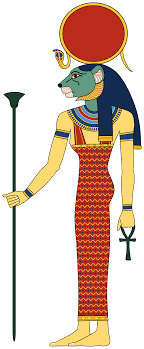
Overview
Sekhmet is an Egyptian sun goddess, albeit not the only one. She is known for her many roles, including her role as a solar deity, warrior goddess, healing figure, and more. The lioness-headed goddess is both loved and feared by followers of the Egyptian polytheistic religion, and her influence on many earthly aspects continues to garner respect. As with many solar deities, Sekhmet represents a duality of traits, particularly with how she is both protective and violent. However, while many sun goddesses are explained to be maternal and gentle in addition to being adept at battle, Sekhmet has less of the caring qualities that other solar goddesses have.
Characteristics
- The sun goddess is often depicted with the head of a lioness
- She is also shown wearing an elaborate headdress on her head
- The headdress is a large solar disk with uraeus, or a cobra head
- Sekhmet is also usually shown with lots of gold jewelry including large earrings, thick bangles, layers of necklaces, and more
- Many depictions of the goddess show her holding a scepter
Abilities
- Controls the presence and power of the sun
- Can breathe fire
- Forms the hot desert winds with her breath
- Can both start plagues and heal the sick/wounded
- Skilled warrior
- Can heal others
Symbols
- Solar disk
- Lionness
- Red linen
- Uraeus, or a cobra head
Traits
- Powerful
- Blood-thirsty
- Battle-hungry
- Vengeful
- Protective
Festivals/Rituals
- Once a year, a festival is held in Sekhmet‘s honor. During this celebration, Egyptians drink excessive amounts of alcohol, play music, and dance; this festival is supposed to mimic a well-known legend where Sekhmet’s peers trick the sun goddess into drinking a massive amount of red wine to distract her from her battle rage and ultimately sedate her.
- Egyptians believed so strongly in Sekhmet’s many abilities and responsibilities that they worshipped her often with food, alcohol, music, and burning incense. They also thought that praying to mummified cats would pass their message along to the sun deity.
Sunna

Overview
The sun goddess of Norse mythology is called Sunna, or Sól, and she is the personification of the solar heavenly body. She is believed to steer a horse-drawn chariot across the sky, filling the role of the sun as she draws sunbeams and warmth across the sky. The two horses who pull Sunna and her chariot are called Árvakr, which means “early-riser” and Alsviðr, which means “all-swift.” Chasing after the goddess and her steeds is the wolf Sköll, which means “treachery.” The Norse explanation for a solar eclipse is that Sköll nearly catches the goddess and even takes a bite out of the chariot. Her brother is the god of the moon, which represents an interesting contrast from the many religions who have a masculine sun deity and a feminine moon deity. Unlike most gods and goddesses, Sunna and her brother were born human and are not immortal.
Characteristics
- The sun goddess Sunna is often depicted with golden hair in swirling curls
- In many impressions of the solar deity, Sunna is wearing a headdress with protruding gold pieces that resemble the sun and its rays
- As shared in Norse mythology, some depictions show the sun deity driving her solar chariot through the sky
- The chariot is pulled by two horses, which have been described as golden in legends
Abilities
- Controls the rising and setting of the sun by driving a magical chariot across the sky
- Protects the earth from the full strength of the sun’s rays but wielding a shield called Svalin
- Healing
- Assists in fighting poor mental health
- Could turn dwarves to stone with a single glance
Symbols
- The sun
- Fire and flames
- Sunday, which is a day of rest
- The colors gold, yellow, white, and red
- Fruit
- Stone
- Summer season
Traits
- Powerful
- Kind
- Generous
- Fiery
- Nurturing
- Joyful and enthusiastic
- Environmentally focused
Festivals/Rituals
- The Sabbat of Midsummer
- As the seasons begin to change on Midsummer Eve and the autumn season draws near, Sunna’s powers and influence begin to weaken. Norse people worship the sun goddess by celebrating her in this time of temporary decline. They play music, read poems, drink, and more
- Believers also light fires to honor Sunna and the light and warmth she brings to the earth
- The sun goddess enjoys offerings of fruit, vanilla, and plants, but she cares most of all that people respect her and respect the earth
Unelanuhi
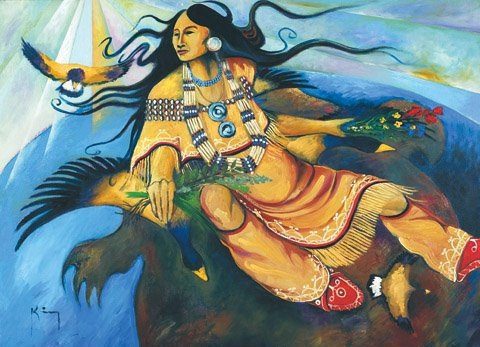
Overview
Unelanuhi is the Great Spirit of the Cherokee people. She is the goddess of the sun and of time; the sun is so sacred to the Cherokee people that each day as the sun rises, they bow, pray, and present gifts to her. Her role in the Cherokee history is extensive. The Great Flood that many religions discuss is present in Cherokee mythology as well and is said to have been caused by Unelanuhi’s weeping when her daughter died. The same myth tells how the goddess holed up in a cave while mourning her daughter and, much like when the Shinto goddess Amaterasu hid away, plunged the world into darkness. Just like Amaterasu, only good music and the promise of a grand celebration pulled Unelanuhi away from her cave.
Characteristics
- Unelanuhi is depicted as a woman of the Cherokee nation
- She has long, black hair that either flows in the wind or is pulled back into a braid
- Her skin is a deep tan color
- She wears traditional clothing, beaded necklaces, and long feathers
Abilities
- Can handle the sun without burning (a skill that other animals and people do not possess)
- Divides time into individual units
- Can heal others
- Omniscient (all-seeing, all-knowing, all-powerful)
Symbols
- The sun
- Flames
- Water beetle, which she used to create the earth
- Red bird, which is what her daughter turned into after her death
Traits
- Wise
- Loving
- Passionate
- Stubborn
- Protective over her people
Festivals/Rituals
- Festivals in Unelanuhi’s honor are centered around food, music, and dancing, just like the celebration that pulled her out of her grief after her daughter’s death
- As the sun rises, people also pray and bow before the rising sun in her honor
Wurusemu

Overview
Wurusemi, also known as Arinna, is the sun goddess of Hittite mythology, which is from an empire that existed thousands of years ago in modern day Turkey. Though called the “Queen of all lands,” Wurusemi has a surprisingly small role in the Hittite myths and legends. She is the wife of the weather god Tarḫunna, and together the two are an incredibly powerful and important couple to the Hittite people. They were responsible for choosing the human rulers of the Hittite empire, a role that demonstrates their importance. Wurusemi is also believed to be associated with fertility and protection as well.
Characteristics
- She often was depicted with a halo
- She was sometimes shown either with a solar disc or even as one
- A very common depiction of her is a small, stout figure make out of gold
- This statue has a large halo and big earrings
- She has a small figure sitting on her lap as well
Abilities
- Mother of humanity
- Brought warmth to the world
- Controlled the sun
- Pass on political power to the humans of her selection
Symbols
- The sun
- Deer, which were sacrificed for her and sometimes used to make worship vessels
- The metal gold
- The eagle, which was a messenger for her and her family
- An apple tree
- The color red or gold
Traits
- Protective
- Wise
- Loving
- Supportive
Festivals/Rituals
- Deer were sacrificed in her honor and sometimes the carcasses were used to make worship vessels
- People would recite prayers to worship the sun goddess
What Is a Sun Goddess?
A sun goddess is a deity that is associated with the sun and other related aspects. Just as the sun is required for plants to grow, sun deities are usually associated with fertility and/or agriculture. They usually have tempers and participate in battle. Because they have such an important role in their respective religions, sun goddesses are typically mother goddesses with maternal traits.
Who is the most powerful sun Goddess?
Though each of the many sun goddesses are vital to the existence of life on Earth, as without the sun nothing could survive on this planet, I would argue that Unelanuhi is the most powerful. Not only did her temporary disappearance plunge the world into darkness, but at one point she was able to strengthen the powers of the sun to the point that many people burned to death. Also, her role as the goddess of time– and the reason for its passage– and as the Great Spirit who used the water beetle to create the world in the first place solidify her as the most powerful sun goddess.
Who are the Egyptian sun goddesses?
The Egyptians worshipped numerous sun goddesses. The goddesses Hathor, Sekhmet, Isis, and Bast were an extension of the solar deity Ra by becoming the Eye of Ra. Nut was the goddess of all heavenly bodies, including the sun. Menhit is a sun goddess that is believed to be the daughter of the Eye of Ra.
Final Thoughts
Sun goddesses in world religions throughout history present a united yet varied group of deities who have an immense amount of respect from their believers. Typically, these goddesses juggle associations with multiple realms, particularly fertility, and are to thank for the world as we know it to be.
Resources
https://en.wikipedia.org/wiki/Aditi
https://en.wikipedia.org/wiki/Amaterasu#In_classical_mythology
https://www.worldhistory.org/Amaterasu/
https://www.timelessmyths.com/gods/japanese/amaterasu/
https://en.wikipedia.org/wiki/Beaivi
https://littlewomen.medium.com/beaivvi-the-sun-goddess-of-the-sápmi-dc092aefd77d
https://suzannecorbie.co.uk/2021/01/25/beiwe/
http://aeternalswirlingfight.blogspot.com/2014/02/celtic-goddesses-brighid-part-1.html
http://aeternalswirlingfight.blogspot.com/2016/02/celtic-goddesses-brigid-final-part.html
https://feminismandreligion.com/2016/06/22/olwen-welsh-flower-and-sun-goddess-by-judith-shaw/
https://journeyingtothegoddess.wordpress.com/2012/08/19/goddess-olwen/
https://en.wikipedia.org/wiki/Olwen
https://www.encyclopedia.com/social-sciences/encyclopedias-almanacs-transcripts-and-maps/pattini
https://feminismandreligion.com/2012/01/27/goddess-meditation-pattini-by-laura-loomis/
https://www.sheppard.me.uk/sri-lanka/pattini/
https://www.wikiwand.com/en/Sun_deity
https://en.wikipedia.org/wiki/Sekhmet
https://www.zinzeudo.com/blogs/zinzeudo-blog/sunna-norse-goddess-of-the-sun
http://nordicwiccan.blogspot.com/2013/06/sunna.html
https://seattlepsychicsassociation.com/norse-sun-gods-sol-sunna/
https://ydalir.ca/norsegods/sol/
https://journeyingtothegoddess.wordpress.com/2012/05/14/goddess-sol/
https://simple.wikipedia.org/wiki/Cherokee_mythology
https://mythlok.com/unelanuhi/
https://mythlok.com/world-mythologies/native-american/cherokee/
https://mythlok.com/arinnitti/
https://en.wikipedia.org/wiki/Sun_goddess_of_Arinna
https://en.wikipedia.org/wiki/Solar_deity#Ancient_Egypt
https://en.wikipedia.org/wiki/Nut_(goddess)

